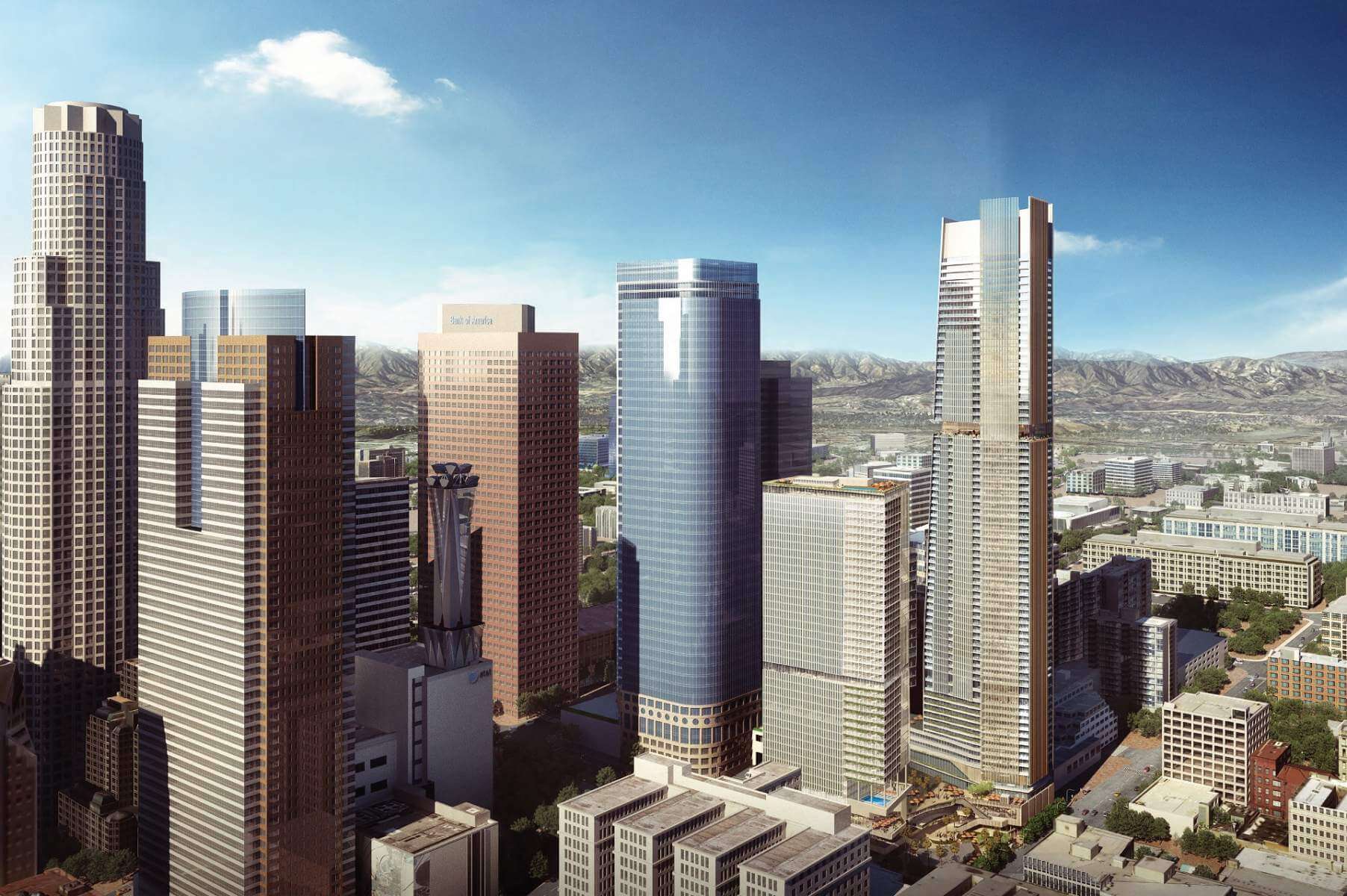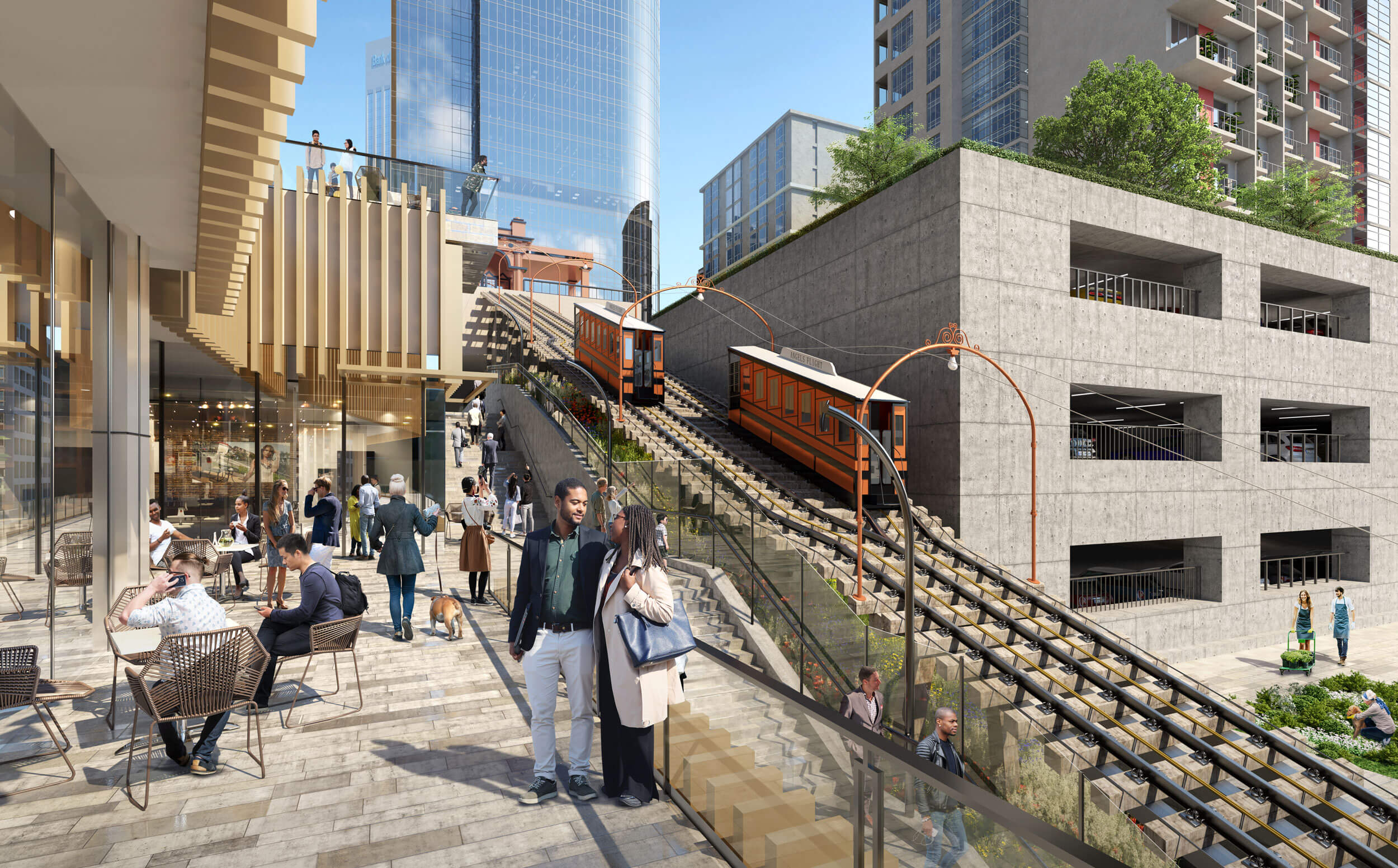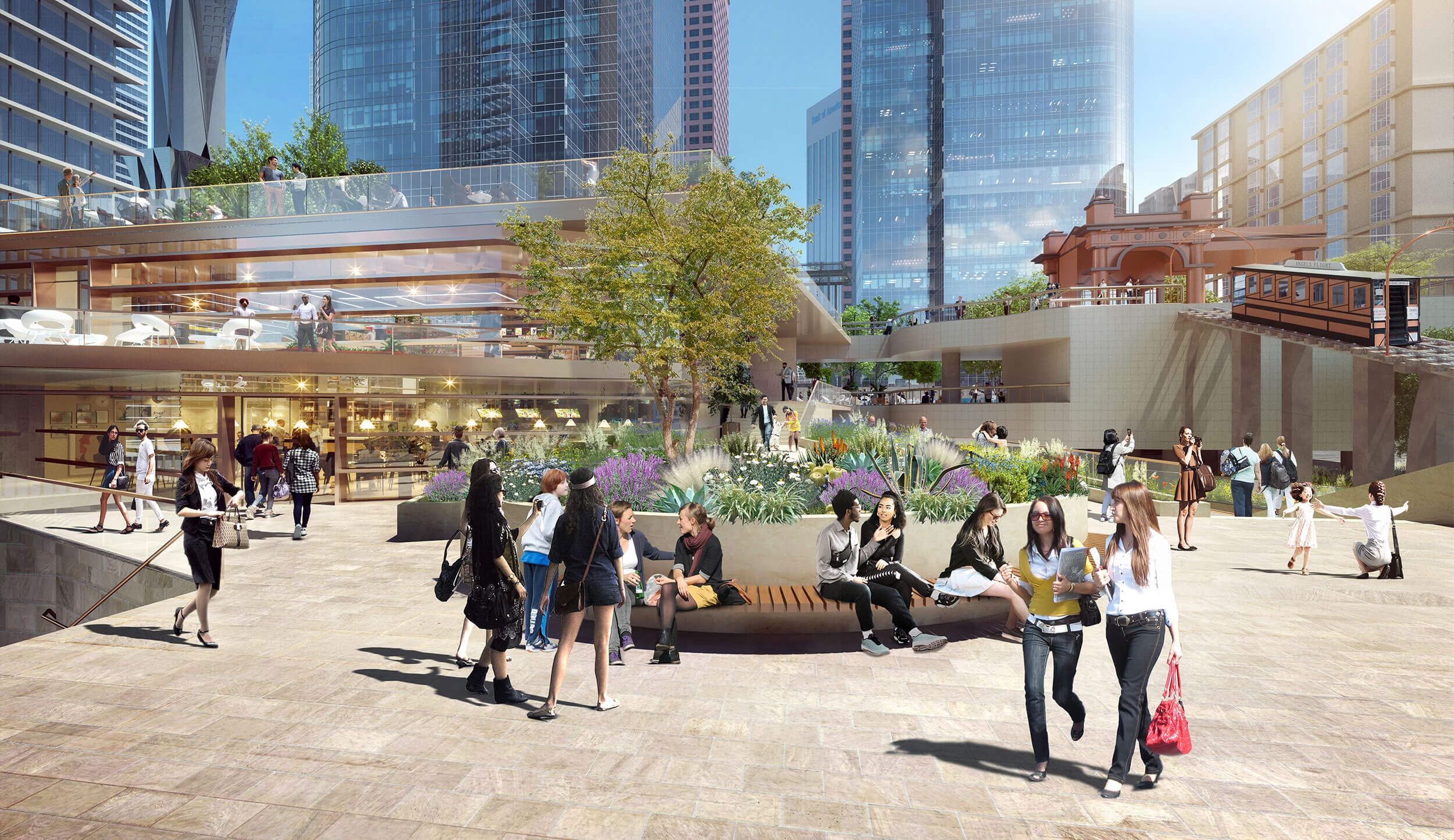Downtown L.A’s $1.6 billion Angels Landing advances after winning key city approval
A $1.6 billion mixed-use development set to transform a vacant lot in the Bunker Hill section of Downtown Los Angeles has passed a major hurdle towards realization with news that its developers, the Peebles Corporation and MacFarlane Partners, have secured entitlements from city officials. In other words, construction is a go although several crucial steps still remain ahead. As noted by the Los Angeles Times, the clock is very much ticking given that the massive project is scheduled for completion ahead of the 2028 Summer Olympics in L.A.
Despite the taller of the development’s two Handel Architects-designed towers being stripped of its “supertall” status after being scaled back from just over 1,000-feet (88 stories) to 854-feet-tall (64 stories), Bunker Hill’s so-called Angels Landing project can still claim a couple a handful of notable superlatives as the tallest development project to be led by a Black development team and as L.A.’s fourth-tallest building (if built today) behind the Wilshire Grand Center, U.S. Bank Tower, and Charles Luckman’s Aon Center. The shorter of Angels Landing’s two high-rises has grown since the project’s initial design was first unveiled from 24 stories to 42 stories.
Between the two towers, the development is set to include a pair of luxury hotels (one in each building), 180 condominiums, 252 rental apartments (with a small number earmarked as affordable), 72,000 square feet of retail and restaurant space, and a sprawling, multilevel public plaza and park named Angels Terrace. OLIN is overseeing the landscape plan for the sloping downtown site.

As for the 2.26-acre Bunker Hill site, it’s a prominent one. Located opposite Downtown L.A.’s landmark Grand Central Market and next to the National Register of Historic Places-listed Angels Flight funicular railway (in its non-original location), the development zone at 4th and Hill Streets was formerly home to a temporary city park dubbed Angels Knoll and is directly adjacent to an entrance to the Pershing Square subway station, which would be incorporated into the development via Angels Terrace.
The OLIN-designed Angels Terrace will also establish a direct pedestrian link to California Plaza, a hilltop commercial complex fronting Grand Street that was developed in the 1980s and 90s and is anchored by two Arthur Erickson-designed office skyscrapers. California Plaza is also home to the Los Angeles County Museum of Contemporary Art, the Colburn School of Performing Arts, and a high-rise hotel.
The Peebles Corporation and MacFarlane Partners first secured development rights for Bunker Hill’s so-called Y-1 parcel in 2017 via a competitive bid process. The parcel, now known as Angels Landing, was originally to be the site of a third California Plaza skyscraper although that project never came to fruition.

“We are focused on bringing increased diversity and equity to L.A. through Affirmative Development, and the transformative impact of empowerment and economic inclusion from Angels Landing will be felt by an array of businesses including African American, Latino- and Asian-owned,” said R. Donahue “Don” Peebles, chairman and CEO of the Peebles Corporation, in a statement shared by the Los Angeles Daily News.
“We have committed to a goal of 30 percent minority and women-owned business contracting across the board for our project in excess of over $480 million, and we*re raising the bar for economic inclusion for development projects in L.A.,” Peebles added.
In total, the project is set to generate 8,300 temporary jobs during its construction and hundreds of permanent jobs following its completion, most of them within the two hotels, as the Times pointed out.
While only 13 of Angels Landing’s 252 apartment units will be subsidized for low- and moderate-income residents, the developers have agreed to generate 65 additional affordable rentals at another, yet-to-be-determined location in Central L.A., bringing the total number of affordable units for the project to 78 per the Times.

Located on the western edge of Downtown L.A., Bunker Hill has a long and complicated history. Originally a wealthy residential district populated by grand Victorian mansions, the hilltop neighborhood experienced a significant shift during the 1920s and 30s when its well-heeled residents decamped for other monied residential enclaves further away from downtown and their grand homes were converted into tenement houses populated largely by working-class families. In 1955, the city launched the Bunker Hill Urban Renewal Project, which displaced thousands of residents as part of a sweeping effort to clear away the “blight” that the city believed had come to define the district and reinvent the area. It is the longest redevelopment project in L.A. history.


